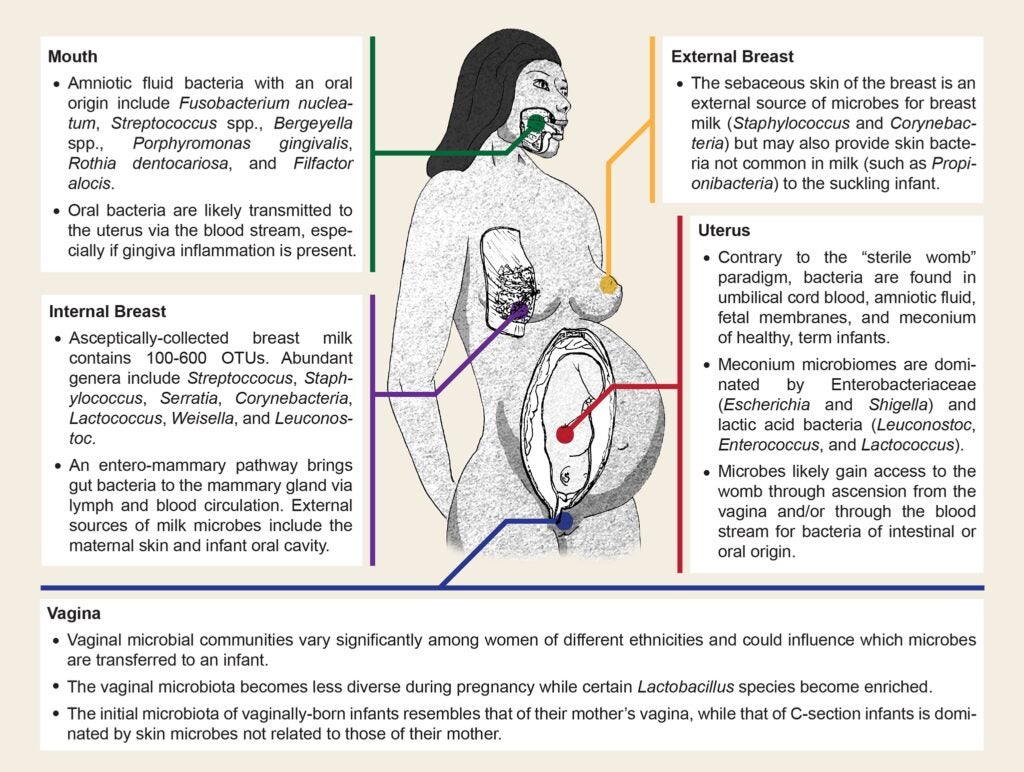A love of garlic, onions and other strong flavors
Babies learn to taste and smell while still in the womb, and as they gulp mouthfuls of amniotic fluid, they become accustomed to flavors of mom’s food. According to a 2007 study in Pediatrics, flavors like vanilla, carrot, garlic, anise and mint have been show to transmit into amniotic fluid and breast milk. When 6-month old babies are presented with the flavors they tested in the womb, they are much more likely to readily eat the strong flavors than babies who didn’t get primed to like garlic.
Your genes – but not in the way you’d expect
What your mom eats before she conceives has a lifelong impact on your genes – at least, that’s what a new study appears to show. Studying women in the Gambia who conceived in the rainy or dry seasons, researchers found that babies’ genes were different based on the nutrients available to their moms at different times of the year. Other studies have hinted that nutrition can change the epigenome – even 60 years after a famine, people born to mothers who were pregnant during lean times had altered tags on a gene that regulates human growth.
Your heart being slowed, just with her gaze
Forget the Vulcan mind-meld. Moms and babies can get inside each others’ heads instantly just by locking eyes. Israeli scientists tested 3-month old babies and their moms, taking precise measurements of cardiac output during face-to-face time that didn’t involve touch. They found that babies and mothers’ hearts start to beat in sync – with the mother’s heart rate increasing and baby’s decreasing — despite the enormous size difference and the fact that they weren’t touching.

Your microbes
In the past few years, the world of microbiomes has exploded – we are learning how these colonies of bacteria influence our weight, what we can eat, and even mood and temperament. But how did those microbes get there? You guessed it – a lot of them come from mom. Partly, those microbes are from the birth canal (Caesarian section babies tend to be more populated with hospital bugs than with mom’s unique variety) but they also come from breast milk, uterus, and skin contact, as shown in the graphic above.
As microbiologist Jonathan Eisen wrote in his blog, “Vaginal birth and breastfeeding can be viewed largely as delivery mechanisms for microbes (and the food for the microbes).” Thanks, mom!
References:
Forestell, C.A.; Mennella, J.A. (2007) Early determinants of fruit and vegetable acceptance. Pediatrics, 129, 1247-1254.
P. Dominguez-Salas et al., “Maternal nutrition at conception modulates DNA methylation of human metastable epialleles,” Nature Communications, doi: 10.1038/ncomms4746, 2014.
Feldmen R, et al. Mother and infant coordinate heart rhythms through episodes of interaction synchrony. Infant Behavior & Development. 34; 2011: 569– 577
Funkhouser LJ, Bordenstein SR (2013) Mom Knows Best: The Universality of Maternal Microbial Transmission. PLoS Biol 11(8): e1001631. doi:10.1371/journal.pbio.1001631









